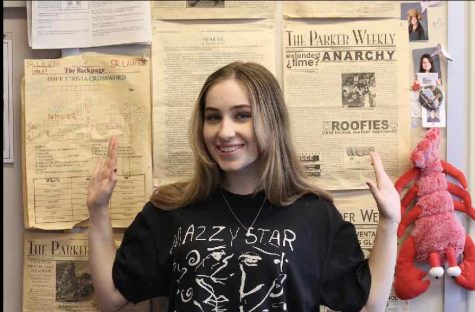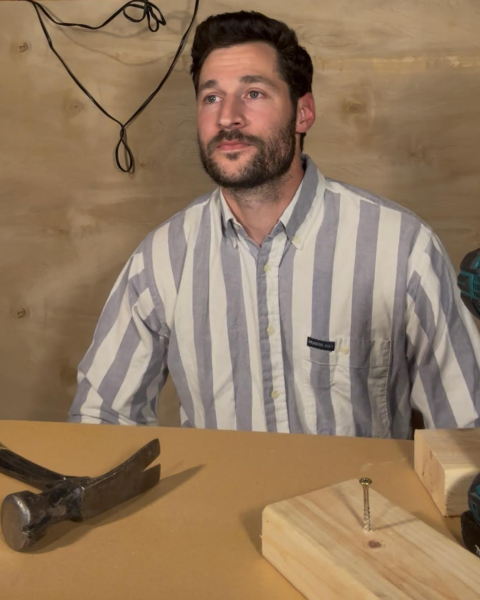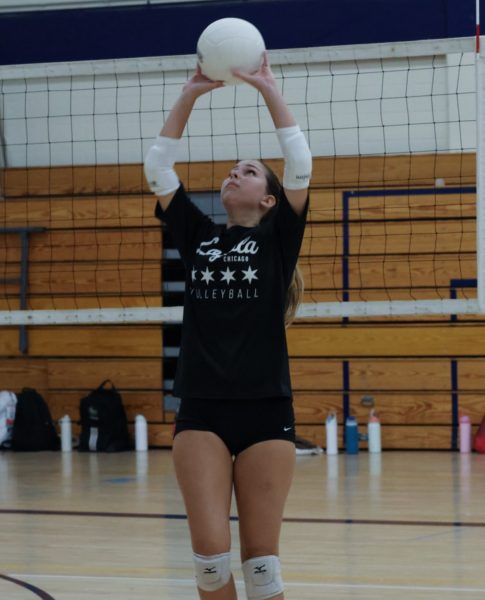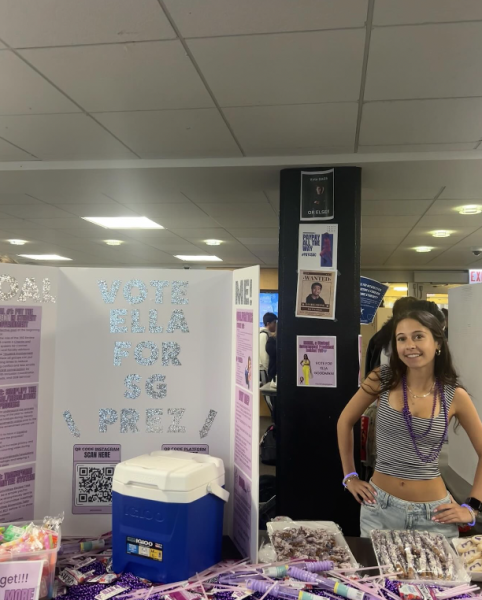Reduce, Reuse, and the Return to Recycling
Parker Students and Faculty Participate in the Climate March in the Loop
After marching at the Climate Strike and preaching sustainability, Parker’s participants returned to a school full of to-go containers and printer paper without access to recycling, one simple way to practice what they were preaching.
When recycling bins were removed from the halls last year, School Nurse Jessica Mather assembled the “Green Team,” a mix of faculty, staff, and students with one shared goal—to bring it back. Now, almost six months later, bins are being brought back, starting with only paper and cardboard recycling.
Director of Facilities Robert Dusing is a member of the “Green Team.” He manages trash-pickup and the school’s contract with Waste Management. Dusing served as a link between the students on the team, this year’s Environmental Committee, and the structural parts of the transition.
Parker’s recycling was consistently contaminated last year, primarily by food stuff, which meant anything in the bins was unusable for the recycling facility. Parker was fined for the contamination, leading Dusing’s trash bill to almost double.
“It’s amazing how the system didn’t work too well,” Dusing said. “But as soon as it went away, students started asking: ‘What happened to recycling, What are we going to do?’ But we couldn’t keep getting the penalties and fines, especially when the stuff just went to the landfill.”
Previously, recycling went into one side of tall and skinny bins that were split into trash and recycling. The tops for the recycling side of these bins are now stored in the boiler room, as the team has opted to swap them out for shorter bins about the size of a backpack. “They’re deep, wide ones, so that you can see everything in there,” junior and Environmental Committee head Camille Freedman said.
“I think it’s easier on your conscience, if you can just throw something in recycling that you know isn’t supposed to go there,” senior Raven Rothkopf, a member of the “Green Team,” said. “It’s just kind of covered and just goes away. So with these new bins, it’s very clear what’s not supposed to go there.”
Dusing purchased 150 blue bins, six dollars each, for the 130 rooms around the school. “We’ll start off with a lot less than that,” Dusing said. “If it looks like the program is successful, then maybe we’ll just run around and put a blue bin in every room.”
Bins will have to be dumped into one of six 96 gallon toters, like the ones on alleyways and curbs, located in different corners of the school. Eventually, these toters will be rolled once a week to the loading dock and then to the alley to hook onto the recycling truck. One two-yard unit will be designated for cardboard only.
Any paper recycled into the smaller bins needs to make it into a toter, but there will be no specific group assigned to this role. The team’s vision is to create a system that only works when everyone buys into it and boosts overall engagement with sustainability. Students will be responsible for managing their classroom bins and making sure paper from rooms without much student activity makes it to the toters. “We’ll have to spread the word and get a champion to pick up these areas that aren’t a classroom,” Dusing said.
“We don’t want this to be something that teachers have to do for the students and we don’t want to put the responsibility or the extra work on the people who are already cleaning our rooms because they already do so much,” senior Molly Taylor, a member of the “Green Team,” said.
The Environmental Committee is also responsible for labeling the bins and tote bags with the rules of recycling. Signs encourage the recycling of clean paper, from magazines to spiral notebooks to envelopes, and make it clear that wet, dirty, or oily paper products shouldn’t be put in the bins. Since contamination led to recycling’s removal, it’s important to the team that high schoolers are more aware and better regulated.
“It’s much easier to regulate recycling in the lower grades because people are designated to one room,” Rothkopf said. “I also think that younger kids tend to follow directions better and listen to their teachers a lot more. The main issue is the high school, with the amount of freedom that we have you can basically do whatever you want, it’s on you to recycle. That’s where most of the contamination came from.”
Now that the first step of the transition is complete, the team is now focused on data collection. Dusing plans to track the amount of paper in toters to see if they need to have the recycling collected more than once a week.
Now that the recycling isn’t in loose bags, Waste Management will be able to weigh the amount of recycling and tell Dusing the weight of all the paper collected over the course of a school year. “That way we can give some feedback to people to say our program is working,” Dusing said. “That’s what we hope to do with it, have a teaching moment.”
Another crucial datapoint is cost. Trash is cheaper than recycling because it goes straight to a landfill instead of being sorted at facilities.
To Dusing, the extra cost is worth it. “I would say I’m a little bit older now and I think the world in general has done a bad job of being good stewards of this planet,” Dusing said. “I’m a tree hugger at heart, and I think we need to be a little more responsible. I think any little bit is helpful to start and then we take a look at where else we can expand to when we should.”
The team is looking to roll out another tool for sustainability in the coming weeks. Four carts have been ordered for students to place their plates, lunch trays, and silverware on so they don’t have to make the trip to the cafeteria. Cafeteria staff would be responsible for taking the carts from various hallways in the school down the elevator and to the cafeteria.
The cafeteria team has also made a recent push towards sustainability. In addition to their regular compost, they’ve joined a service that will collect excess fryer oil and turn into it biofuel.
In the past few years, Dusing has outfitted almost all of the school’s water fountains with bottle fillers to encourage students to use reusable cups and water bottles. He’s committed to making the Hinckley water coolers in various offices the only major use of plastic in the school, since the company will collect and reuse each jug.
“This experience more so opened my eyes to how much we consume and the paper we throw away and all the materials that aren’t recyclable,” Taylor said. “I’m thinking about how as a school we can try to reduce as much as we can.”
The Environmental Committee also has reducing plastic use and waste on their to-do list.
Dusing suggests that one way to do this is to move towards different materials, like glass. “The only problem with glass at the school is we’ve seen a little bit of an increase in breakage,” Dusing said. “The next thing you know we’re getting a phone call that there’s a broken bottle out on the playground, somebody inevitably drops it, but I guess that’s better than having a plastic bottle in the landfill, for all eternity.”
For now, the team’s focus is on their initial success. “It’s really exciting that after we’ve just been talking for a while, to actually get the bins back,” Taylor said. “We hope this is a chance to educate the school and do better at recycling than we’ve ever done before.”
Even though it’s extra work, Dusing is ready for the new system to be implemented.“If it’s a few extra steps,” Dusing said, “we could all use the exercise.”











